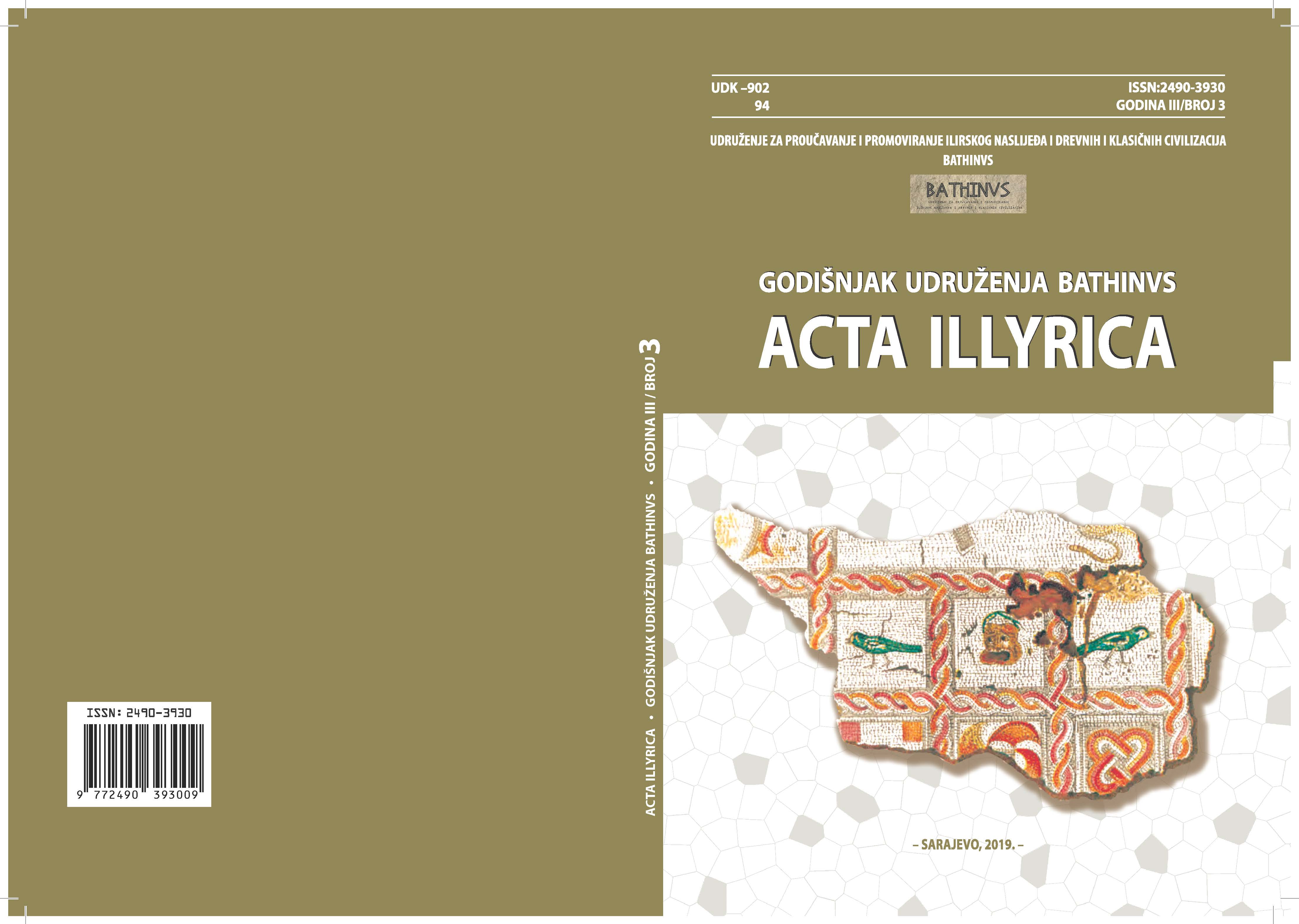Cohortes equitatae in Humac: Kombinirane kohorte na Humcu u doba principata.
Cohortes equitatae in Humac during the Principate
Author(s): Almir MarićSubject(s): History, Archaeology, Cultural history, Local History / Microhistory, Military history, Ancient World
Published by: Udruženje za proučavanje i promoviranje ilirskog naslijeđa i drevnih i klasičnih civilizacija “BATHINVS”
Keywords: cohortes equitatae; Humac; Ljubuški; Hispanic cohorts; cohors III Alpinorum equitata, cohors I Belgarum equitata; cohors VIII Voluntariorum civium Romanorum;
Summary/Abstract: This paper provides an overview of the combined auxiliary cohorts that were settled at camp on Humac during the period of Principate (1-3th century). After the end of the Great Illyrian revolt (AD 6-9), some of the cohorts that participated in its suppression remained at this camp. Combined Hispanic cohorts (cohors I Lucensium equitata and cohors I Bracaraugustanorum equitata) and cohors III Alpinorum equitata, that probably played a major role in the building of the camp on Humac,which served as a permanent base for Roman military forces, were among them.Cohors I Belgarum equitata took permanent garrison in the camp at the beginning of the 2nd century. Monuments left by this cohort serve as evidence about the increased participation of local young men in the Roman auxiliary troops, while officers originated from the western parts of the Empire. Also, we discussed the monuments of cohors VIII voluntariorum civium Romanorum in the Ljubuški area, which has not yet been determined with certainty as cohorts equitatae. We dedicated special attention to the issue of marriage between local girls and Roman auxiliary soldiers and officers that, in our opinion, wasn’t adequately treated in current literature. In connection with this, the case of Iulia B, the wife of decurion Flavius Aurelianus,is particularly interesting. She served as an example of Romanization, or how local girls married auxiliaries which were settled in the camp on Humac. Through careful analysis of epigraphic records with their names, we found that previous interpretations of these monuments are not scientifically justified, and that Iulia B[---] is probably from Pannonia, as well as her husband.
Journal: Godišnjak Udruženja BATHINVS “Acta Illyrica”
- Issue Year: 3/2019
- Issue No: 3
- Page Range: 79-96
- Page Count: 18
- Language: Bosnian

